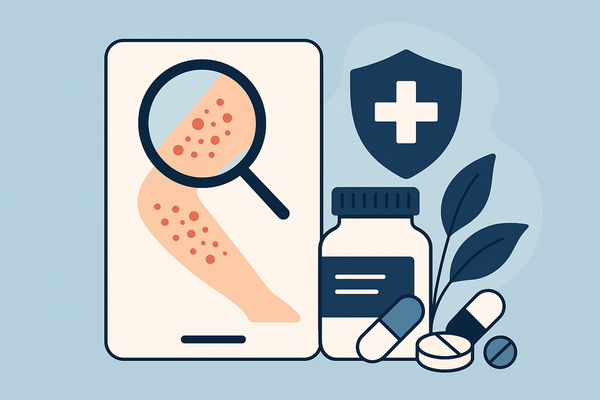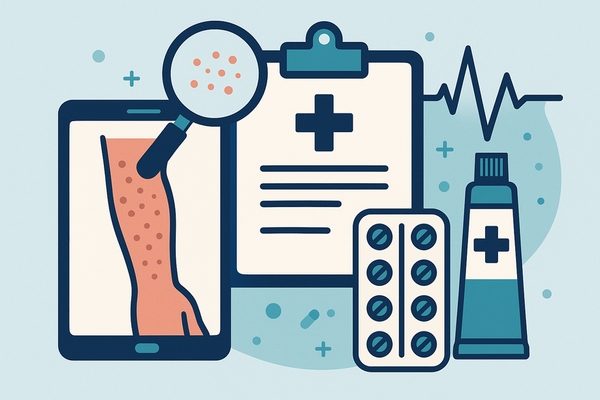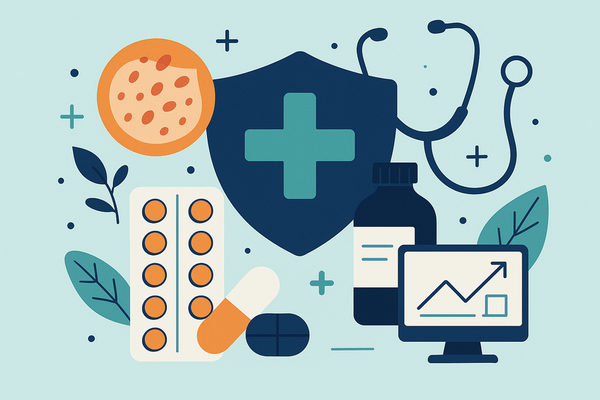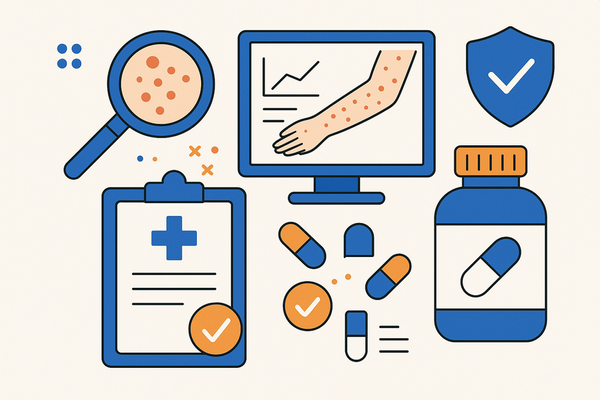Medication Rash Treatment: Your Guide to Identifying and Managing Drug-Induced Rashes
Explore effective medication rash treatment strategies to identify, manage, and prevent drug-induced skin reactions. Ensure prompt care for recovery.
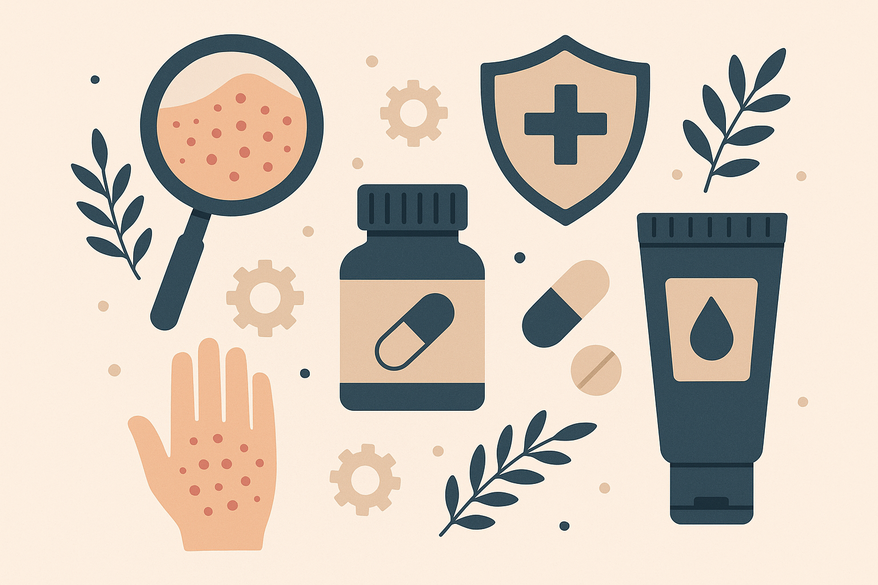
Estimated reading time: 8 minutes
Key Takeaways
- Definition of drug-induced rashes and importance of early treatment
- Key signs, symptoms and risk factors to watch for
- Self-assessment steps and when to seek medical help
- Options from OTC remedies to prescription therapies
- Preventative strategies and follow-up care to avoid recurrence
Table of Contents
- What Is a Medication-Induced Rash?
- Common Signs and Symptoms
- Causes and Risk Factors
- Identifying a Medication-Induced Rash
- AI-Powered Rash Analysis
- Approaches to Medication Rash Treatment
- When to Seek Professional Medical Advice
- Preventative Measures and Follow-Up Care
- Conclusion and Actionable Guidelines
Medication rash treatment starts with understanding what a drug eruption is. A medication-induced rash is an abnormal skin reaction triggered by certain medicines, either through an allergic response or direct skin irritation. Early treatment is crucial because reactions can range from mild itchiness to severe, life-threatening conditions—prompt care prevents complications and speeds recovery. This guide offers clear, expert steps for patients and caregivers to recognize, manage, and prevent medication-induced rashes. For more, visit Children’s National or read the Harvard Health Blog.
What Is a Medication-Induced Rash?
Medication-induced rashes, also known as drug eruptions, are abnormal skin reactions triggered by certain medicines. They can manifest as redness, bumps, or hives, guiding proper treatment.
Key definitions:
An abnormal skin reaction triggered by the use of certain medicines.
(Children’s National)A drug eruption can result from an allergic response or direct irritation by the drug.
(Harvard Health)
Common synonyms include medication rash, drug eruption, drug reaction, and drug-induced skin reaction. For more on symptom patterns and differential diagnosis, see our guide Identifying Drug-Induced Rash Symptoms.
Common Signs and Symptoms
Spotting the signs early helps direct proper treatment. Rashes vary in appearance and severity:
- Red or pink patches or bumps spreading from the torso to arms and legs
- Hives (raised, itchy welts that move around)
- Red, scaly, or thickened skin areas
- Dark red or purple spots that recur in the same location
- Peeling or blistering in more severe cases
Differentiating mild vs. serious reactions:
- Mild irritation: limited redness, mild itch, small localized bumps
- Serious allergic reaction:
- Rapidly spreading hives
- Swelling of face, lips, or throat
- Breathing difficulty or wheezing
- Blistering or peeling skin
- Mouth, eye, or genital sores
- Dizziness or fainting
Recognizing these patterns guides you to the right level of care in medication rash treatment.
Causes and Risk Factors
Certain medicines are more likely to trigger rashes. Knowing causes and risks helps tailor treatment:
- Antibiotics (penicillin, sulfa drugs)
- Anti-seizure medications (phenytoin, carbamazepine)
- Nonsteroidal anti-inflammatory drugs (ibuprofen, naproxen)
Key risk factors:
- Known drug allergies or previous rash reactions
- High or frequent dosages
- Drug interactions when taking multiple medications
- Personal or family history of allergic conditions
Timing of reactions:
- Immediate onset: hours after a dose
- Delayed onset: days to weeks after starting a drug
- Possible after long-term use or repeated exposure
Understanding these triggers and risk factors supports targeted treatment and prevention planning.
Identifying a Medication-Induced Rash
Early identification is the first step in effective treatment. Use these self-assessment guidelines:
- Monitor for any new or unusual skin changes after starting or changing a medication.
- Document:
- Onset date of the rash
- How the rash spreads or changes over time
- Any related symptoms (fever, mouth sores, itchy eyes)
- Track reaction to dose changes:
- Note if rash improves when a dose is skipped or reduced
- Check if rash returns when medication resumes
Report any rash that appears with other signs of allergy or discomfort, or if it spreads rapidly or worsens. Accurate documentation and timely reporting help your provider plan safe and effective treatment.
AI-Powered Rash Analysis
Digital tools can support early identification and tracking. For instance, users can upload images to Rash Detector and get an AI-powered summary report in seconds.
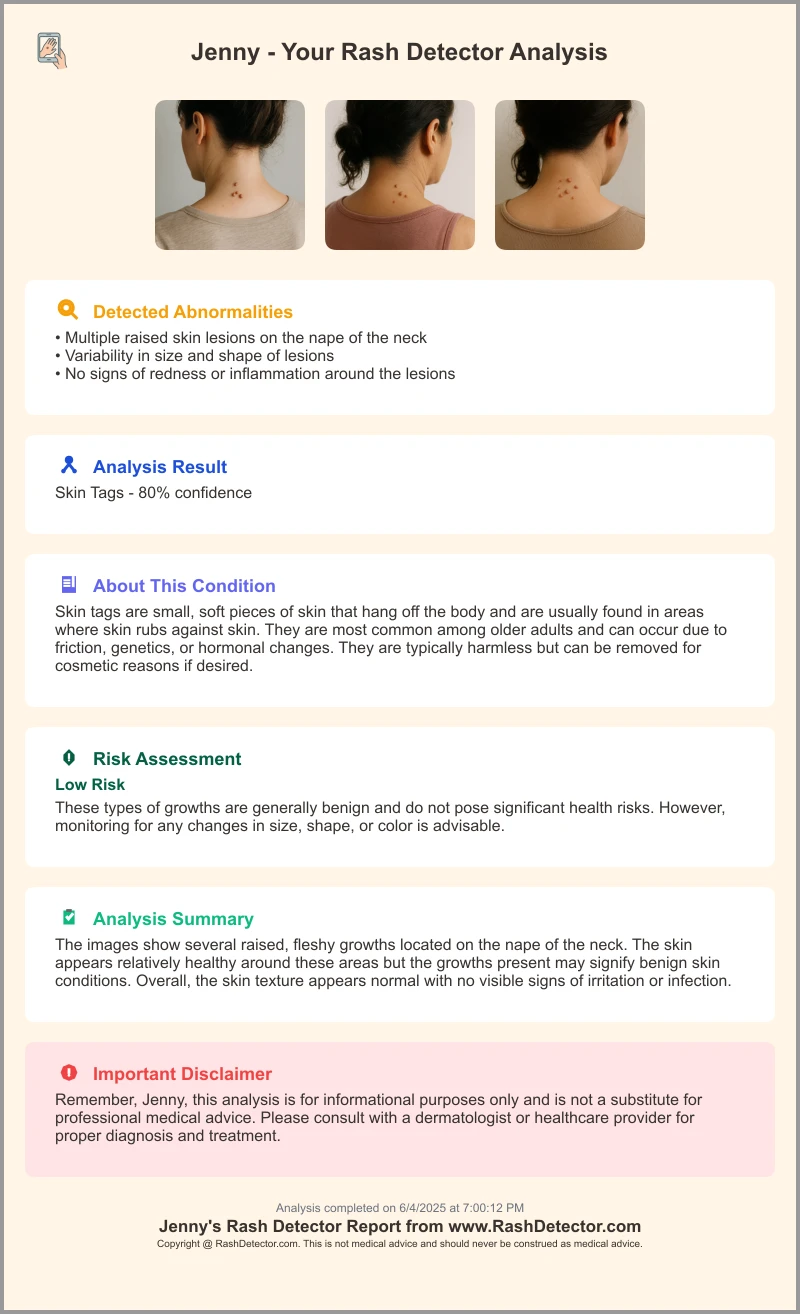
Approaches to Medication Rash Treatment
Treatment depends on severity. Always consult a healthcare professional before changing any medication:
- Stop the Offending Drug
- Under doctor’s supervision, discontinue or switch the medication.
- Never stop prescribed medicine without professional advice. For detailed long-term management of drug allergy rashes, see Managing Drug Allergy Rash.
- Over-the-Counter (OTC) Options
- Antihistamines (cetirizine, diphenhydramine) to reduce itching and hives
- Topical corticosteroid creams (hydrocortisone) to ease mild inflammation
- Prescription Treatments
- Stronger oral or IV antihistamines and corticosteroids for widespread or persistent rashes
- Epinephrine injection for severe, life-threatening allergic reactions (anaphylaxis)
- Supportive Measures
- Cool compresses to soothe irritated skin
- Oatmeal baths for calming itch
- Mild, fragrance-free moisturizers to protect the skin barrier
When to Seek Professional Medical Advice
Some symptoms require immediate care. Don’t wait if you see red-flag signs:
- Difficulty breathing or swallowing
- Swelling of face, lips, tongue, or throat
- Rapidly evolving blistering or peeling skin
- Sores in the mouth, eyes, or genital area
- Dizziness, fainting, or rapid heartbeat
Preparing for the Visit:
- Bring a complete list of medications (names, doses, start dates)
- Take photos of the rash progression for reference
- Note symptom timeline and any known triggers
- Mention any past drug allergies or reactions
Clear communication and a detailed history help your provider deliver the right treatment quickly.
Preventative Measures and Follow-Up Care
Preventing future rashes means planning ahead with your provider:
- Share full medication and allergy history with every healthcare professional.
- Ask about allergy testing or an allergist referral if you’ve had prior drug reactions.
- Ensure drug allergies are clearly flagged in your medical records.
- Discuss safe alternative medications if you have a history of rash reactions.
Provider’s Role in Follow-Up:
- Review medication lists for cross-reactivity risks
- Recommend safer drug options when possible
- Set up a monitoring plan to watch for rash recurrence
Proactive steps and open communication keep your treatment safe over time.
FAQ
- How can I tell if a rash is drug-induced? Look for new skin changes after starting or changing medication, especially redness, hives, or blistering. Document timing and associated symptoms.
- When should I stop my medication? Never stop without consulting a doctor. Seek immediate care if you experience severe signs like breathing difficulty or swelling.
- What over-the-counter treatments help? Antihistamines for itching and hives, and hydrocortisone cream for mild inflammation can provide relief.
- Are there tests for drug allergies? Yes, an allergist can perform skin tests or blood tests to identify specific drug sensitivities.
- Can AI tools replace medical advice? AI-powered analysis like Rash Detector supports early detection but should not replace professional diagnosis and treatment.


